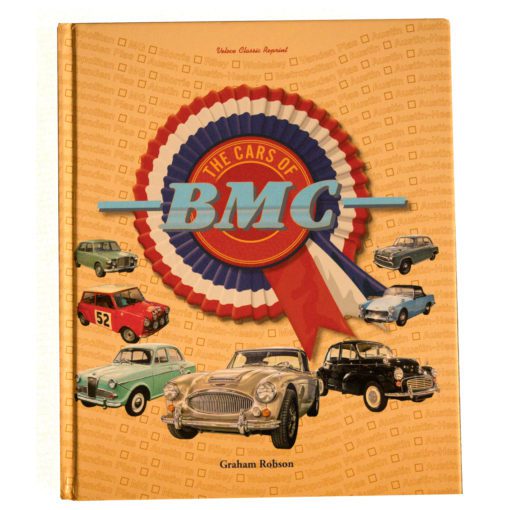Product Description
SPINE OF BOOK DAMAGED
£30.00 £12.50
The complete history of BMC – British Motor Corporation – and a comprehensive directory of the marques and models that made up the whole. Following the historic amalgamation of Morris Motors Ltd and the Austin Motor Co Ltd in 1952, through to the merger with British Leyland in 1968, this book details the company’s origins, its achievements and its legacy, and provides a close look at the many car models that were produced during its heyday.
304 pages – Reprint 2022 first published 1987
By Graham Robson
SPINE OF BOOK DAMAGED
Having this book in your pocket is just like having a real marque expert by your side.
Benefit from the author’s years of MG Midget & A-H Sprite ownership, learn how to spot a bad car quickly and how to assess a promising one like a professional. Get the right car at the right price! This book is the perfect companion for the first-time or even more experienced buyer. All the information is here to help make a clear and balanced decision, to counter the vendor’s claims, and even negotiate a better price. The author has bought and sold many MG Midgets & A-H Sprites over the years, and his knowledge and enthusiasm will prove a vital resource for potential buyers. Period covered: 1958-1979 Models covered: Austin-Healey Sprite MkI,II,III,IV and Austin Sprite 1958 to 1971 MG Midget MkI,II,III and Midget 1500 1961 to 1979 Features: * Like having a real marque expert at your side benefit from years of real ownership experience. * Full coverage of all MG Midget & A-H Sprite models * Where and how to buy a MG Midget & A-H Sprite * Advice on choosing the right model and condition * Key checks spot a bad car quickly * Comprehensive inspection guide * In-depth analysis of strengths and weaknesses
The book covers the technical developments such as the introduction of synchromesh gearing and hydraulic brakes as well as new engines. Due to the post-war popularity of the cars in the US after American Gls shipped examples back from Britain, modifications were made for US editions. Soon celebrities such as Clark Gable were driving them. In this readable and informative book, the author follows the development of the various MG T-Series models, incl. the prewar Midgets and the MG TC, TD and TF
This is the inside story of the MG Design office, from 1956 until its closure in 1980. Explaining how the various models were drawn, planned, and developed by the small team of engineers, it also shows how the input and control changed from Morris, Wolseley, Riley Group, Austin-Morris, and Austin Rover. The effects of the Triumph-Austin merger are detailed in model changes, alongside the effects of safety legislation, mainly imposed by the United States. Trying to remain as individual as possible during this period, MG developed record breakers and a unique Competition Department. Special cars were built and tested, and prototypes for the MGB replacement were drawn up all in parallel with the development of MG production cars using engines from any part of the company.
This is the first major reprint of the MG War Time Activities book and is now produced in glossy artwork paper complete with additional pictures and information. The book was originally produced after the War and given to some members of the work force as a memento of the great work they had done during the dark years of the Second World War. Originally the author was unknown, but due to a chance phone call from Peter Watson to the Club offering to donate some MG memorabilia, it was discovered that his Grandfather, George Propert, General Manager of MG during some of the war years, was in fact the author of the original book. This has now been credited to him and the reprint is now produced with the full permission of Peter.
For those who have not already read a copy of the photocopied reproduction, the book covers each year at the factory during the war. They had to deal with some insurmountable problems which the diligence of the workers and the initiative of management saw them through. An example of this was the building of the Albemarle fuselage (the main fuselage of a relatively unknown medium bomber). The time taken in testing all the circuitry took days, but due to the initiative of two radio technicians working at the factory, a test rig was built which not only cut the time to test the system, but did it far more accurately. This is just one example of how difficulties were overcome.

